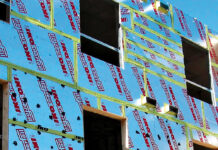By Leor Margulies
Robins Appleby LLP
The continuing evolution of Tarion, the creation and growth of HCRA, and the many new consumer protection provisions recommended by the Ministry of Public and Business Service Delivery and Procurement continue to challenge lawyers and builders. The desire of provincial governments, whether Liberal or Conservative, to engender political goodwill by creating ever-increasing regulation and restriction in the name of “consumer protection” in the housing industry, continues to make the business of building new homes in Ontario a very challenging and often time-consuming experience and for sure, a very expensive one. Here is my personal take on the two major regulatory authorities in the housing industry as to what they do, what they want to do, and what they are planning to do:
HCRA – What it requires builders to do
- Obtaining licensing for each project.
Until two years ago, builders had to obtain a HCRA license for the builder registration and only after getting the builder registration license, could they then apply to Tarion to obtain their qualification for enrolment (QFE). The double approval process created months and months of licensing reviews before a project could be launched. One major improvement two years ago was to allow for concurrent applications which was a very positive improvement and reduced delays.
Nonetheless, the licensing process, particularly with HCRA, which originally professed a target six-week turnaround, continues to be a challenge for builders, for the new ones or experienced ones. I am sure HCRA is working on this, but time is money for going to market, and we need to move up approval times, particularly where the application is not from the first-time builder.
- Adhere to and complying with the Addendum
The Addendum was originally created by Tarion and enacted by legislation as a required schedule to every new home purchase agreement. It was and continues to be a major source of inconsistency, confusion and excessive complication in so many areas. A consultative process with all stakeholders is currently underway to revamp the Addendum to address items such as:
- The limitations of the Unavoidable Delay provisions including multiple Unavoidable Delays, the definition of “pandemic” and the restrictive definition of “Unavoidable Delays;”
- Inconsistencies between various provisions making it difficult for lawyers and builders to determine what process they should follow. This is clearly evident when a builder is approaching an outside occupancy date and wishes to set a date beyond that date. The provisions are inconsistent as to what the builder should do, can do and cannot do; and
- Undue restrictions in amending purchase agreements and critical dates when purchaser and vendor are both represented by lawyers.
Hopefully, this industry endeavour will result in a more streamlined Addendum. Stay tuned.
- Complying with advisories from HCRA
During the pandemic, the double whammy of massive cost increases, and delays made many projects uneconomic in the face of early sales with revenues that could not match the unforeseen expenses. Use of the early termination clause by builders, and in many cases, purported pressure tactics by builders to seek cost increases from purchasers to avoid cancelling a project came under severe scrutiny by the press, then the Ford government and, ultimately, HCRA, resulting in detailed advisories, which have been updated from time to time relating to these matters.
- Addressing consumer complaints received by HCRA
I have seen over the last few months a number of what I consider unjustified or frivolous complaints made by purchasers to HCRA which are simply turned over to the builder to be responded to. It would appear that these complaints have not been vetted by the HCRA Officer before they are sent to the builder for reply. Also, the time frames for replying are usually 10 days, notwithstanding that HCRA has had the complaint for months. As a result, the builder may spend hours going through their files to address a complaint that should never have come to their desk in the first place (or at least having HCRA focus only on specific legitimate complaints). It is far too easy for consumers to file complaints and force builders to invest significant time to address them where there is little or no merit to the complaint. More vetting at the claims intake process by HCRA should be considered. I also suspect, and HCRA can advise, that there are perhaps too many consumer complaints coming in for each of them to be properly vetted with the existing staff.
To be fair, I have seen other cases where HCRA has done a proper vetting review of the complaint, and posed very specific questions of concern to the builder based on the complaint.
I am sure administrative changes could be implemented to address these issues to ensure that only legitimate consumer complaints are forwarded to builders. This will also ensure that legitimate consumer complaints are given proper attention by both HCRA and the builders.
Tarion
- Dealing with the ever-increasing 30-day and one-year purchaser deficiencies
Tarion, under pressure to reform after receiving a scathing review by the Auditor General in 2019, has extended the timing for purchasers to file complaints resulting in the multitude of claims continuing to grow. I am sure many of you have seen 30-day and one-year lists that are in the hundreds of items. Because Tarion is encouraging purchasers to make complaints for every item that they can possibly think of, every one of those possible minor or imagined items goes on to a 30-day or one-year list. All of this requires time and effort on the part of builders and costs and ultimately, this cost is going to be borne by the consumer in a new home purchase price.
- Dealing with purchasers who cannot be satisfied no matter what the builder does
Tarion often pressures builders to pay cash settlements to purchasers who are unreasonable and impossible to deal with simply to get the files closed. The volume of claims and the number of unreasonable purchasers is often forcing builders to settle claims (valid or otherwise) via cash settlements as expedient answers.
I have also seen a number of recent cases where conciliation decisions were initially in favour of the builder but under relentless pressure from purchasers, the decisions are overturned, making for a frustrating and uncertain experience for builders.
- Creation of new rules dealing with project disclosure, cancellations and deposits
There has been a recent push to address a number of consumer issues by Tarion or the Ministry. For instance:
- A 10-day cooling off period for lowrise sales
This request has actually been passed by the government but pending input from the industry. The potential for purchasers to shop around and sign up a number of purchase agreements during the 10-day period for lowrise (and the loss of two sales weekends) is concerning to developers. A compromise has been put forward to the Ontario government by OHBA to at most, follow the B.C. model of a three-day cooling off period, coupled with a small monetary penalty to purchasers who cancel, to give them incentive to spend the time reviewing the agreement before they sign in the first place.
Coupled with the 10-day cooling off period was a requirement to pay interest on deposits paid and earned during the cooling off period if the purchase agreement was terminated. This is also not in force and is being reviewed by the ministry at the request of OHBA.
- Dealing with StateView and similar lowrise disasters
Tarion is facing a huge potential loss on the StateView receivership where purchaser deposits were obtained and used to fund the purchase of the very land where the projects were going to be built (or used elsewhere), with projects not being built and deposits being lost. A number of other projects were unregistered by StateView and the deposits may very well have been lost, resulting in claims to Tarion and further losses to purchasers whose deposits exceed the maximum coverage limits.
A great deal of pressure was brought by the government to treat lowrise deposits similar to condominium deposits, for example, they have to be maintained in trust or insured. The OHBA and BILD were successful in convincing the government that this would add tremendous cost to projects and ultimately, not protect Tarion.
As an alternative, Tarion is now circulating a proposal to incentivize purchasers to notify Tarion of all the details of a new purchase agreement. Tarion would then set up a system to verify that the builder had a QFE for the project to avoid in part, the StateView situation of sales being made without a QFE. Failure to notify Tarion by the purchaser of the information could result in a reduction of the maximum deposit coverages for that particular purchaser in the event that a certain threshold of losses was exceeded in any given year by Tarion. A rather complex proposal is just now being circulated for consultation.
Another proposal is to require lowrise developers to pay a portion of the enrollment fees at the QFE stage and not at the enrollment stage so there would be funds to cover loss of deposits. Another troubling proposal from a financial perspective.
- Disclosure of new freehold home purchase termination on the Ontario Builder Directory
This is another proposal that has been passed but not implemented. Again, this proposal ignores the impact on builders who legitimately have terminated lowrise purchase agreements for valid legal and business reasons. More thought and discussion are required.
Bottom line
We thought that the change of government from the Liberals who had over-regulated the industry to the Conservatives would result in less regulation. This has not come to pass. On the planning side, there has been significant improvement in the first few years of the second term of Ford’s government, although even that has taken a turn for the worse since the Greenbelt scandal. But the issue of ever-growing consumer protection by HCRA and Tarion is going to continue to be a challenge for the industry. However, I have the faith in our representative organizations of OHBA and BILD, to continue to advocate vociferously on behalf of the industry to ensure that consumer proposals are even handed and do not unduly add significant cost to homebuilding. If the government wants the industry to build all 1.5 million homes in the next 10 years, it has to create an environment where business can be conducted in a fair and reasonable fashion.
Leor Margulies is Real Estate Group Co-Head, Robins Appleby LLP. robinsappleby.com.













